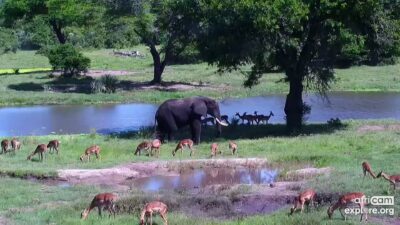
There’s nothing like seeing wild animals in the wild. But if you can’t make it to an African safari or see an orca breach mere feet from your boat, you’re not out of luck. Explore.org’s live wildlife cams make connecting with nature easy.
Wildlife live streams give viewers an immersive and unobtrusive way to destress and appreciate nature. They also function as important conservation tools by raising awareness about wildlife and their habitats, as well as promoting environmentally friendly behaviors.
Ready to get wild at home? Here are some of our favorite wildlife live streams:
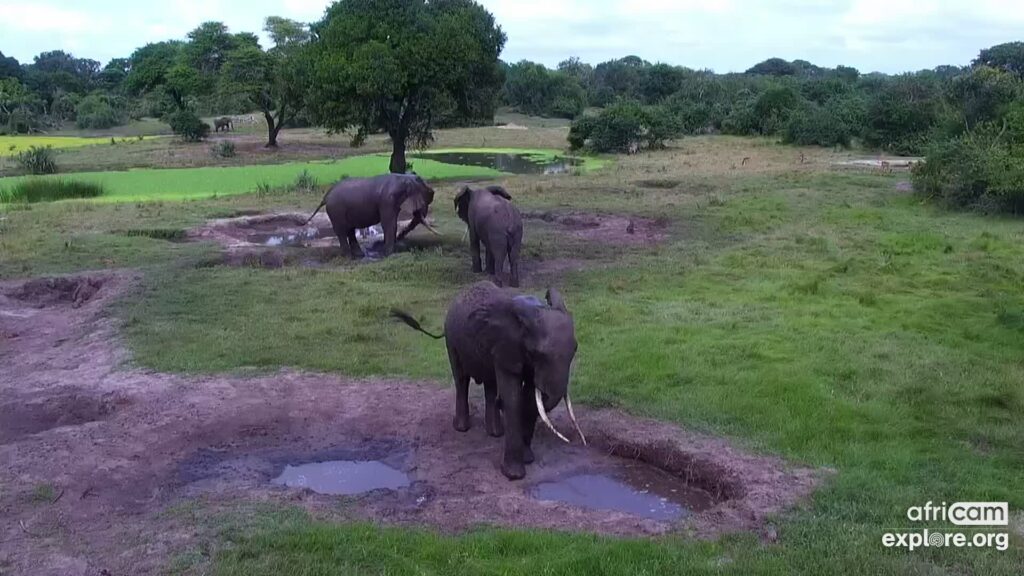

Tembe Elephant Park – Emangusi, South Africa
Situated on a former ivory trade route between Maputaland and southern Mozambique, this game reserve and wildlife haven is a true conservation triumph. Tembe Elephant Park was established by the Tembe Tribal Authority in 1983 to protect migrating elephants from poaching. These gentle giants play big roles in local ecosystems by dispersing seeds and influencing plant communities, and they carry enormous cultural significance across Africa. Due to a long list of threats including poaching, habitat loss, and climate change, their numbers are in decline. However, careful land management and conservation efforts are giving Africa’s elephants a fighting chance. Today, over 200 elephants roam the park’s pristine sand forests and swampland. A 24/7 live stream allows viewers to get in on the park’s watering hole action, where elephants and buffalo abound. Look carefully! If you’re lucky, you might even spot the elusive rhino, lion, leopard, and more!
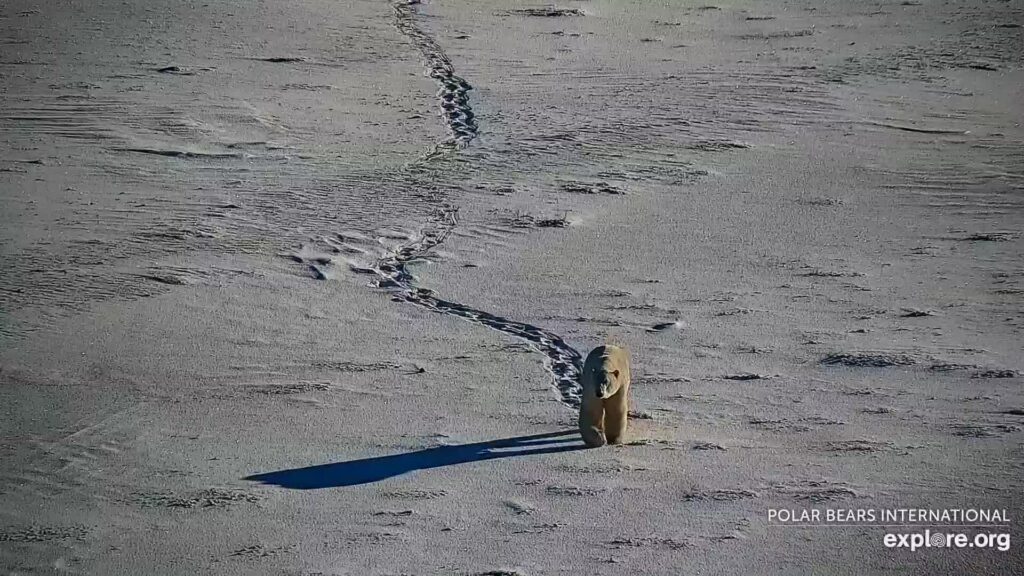

Polar Bears Cape West – Wapusk National Park, Manitoba, Canada
Wapusk National Park gives you a bear’s-eye view of Canada’s arctic tundra, no parka required. If you can’t manage to rent a tundra buggy to access the park for yourself, observing polar bears through one of the multiple wildlife cams is a good alternative. At the top of the food chain, polar bears play an important role in their local ecosystems by keeping populations in balance. For Canada’s indigenous people, they’ve long been a symbol of strength, agility, and intelligence. Polar bears rely on sea ice for hunting, mating, and raising their cubs. As sea ice declines due to enhanced arctic warming, so do polar bear populations—they’re currently listed as a vulnerable species by the IUCN Red List. Groups like Polar Bears International, a team of researchers and volunteers partnered with Wapusk National Park, are working to keep polar bears afloat. As one of the largest concentrations of female birthing dens in the world, the park offers cam viewers an exciting chance to see this iconic species in its natural habitat. Be sure to tune in during October and November, when polar bears congregate while they wait for sea ice to form.
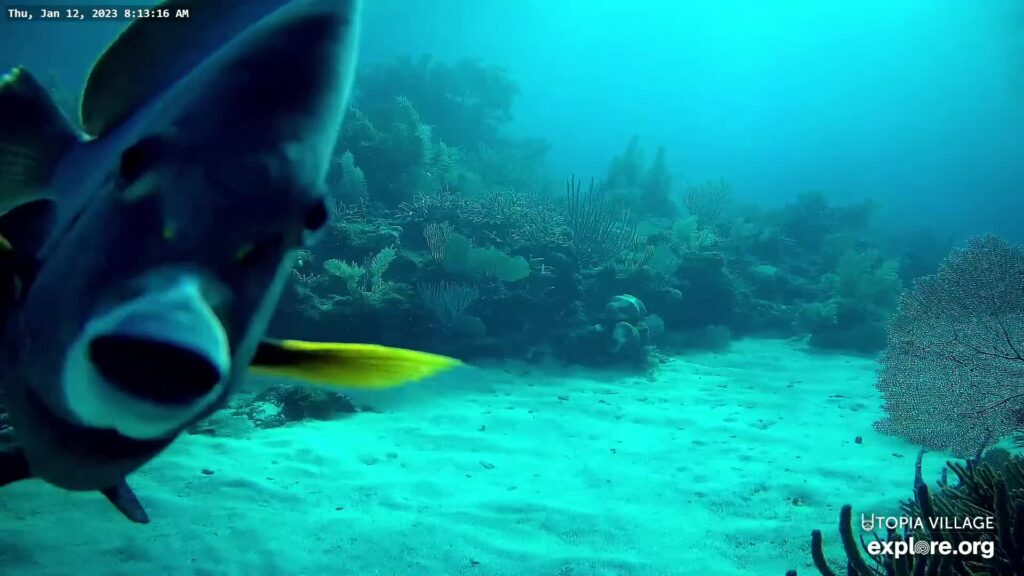

Utopia Village Underwater Reef – Utila, Honduras
No snorkel? No problem! With nine different wildlife cams, this resort-turned-research center immerses viewers in the tranquility of the underwater world. Located 18 miles off the coast of Honduras, the island of Utila forms part of the Mesoamerican Reef System—the second largest coral reef system in the world. Formerly a premiere dive resort, Utopia Village is now home to the Utila Coral Foundation’s Marine Research and Conservation Center. Coral reefs are the most biologically diverse ecosystems in the world and support millions of people worldwide. Unfortunately, these ecosystems are threatened by rising temperatures, ocean acidification, disease, and more. Researchers at Utopia Village are working to protect Utila’s marine life through reef monitoring, coral outplanting, and education. These live streams treat viewers to stunning turquoise waters, vibrant corals, swaying sea fans, and bright schools of tropical fish. Pro-tip: Sharks are known to make regular night time appearances on the Dock Cam!
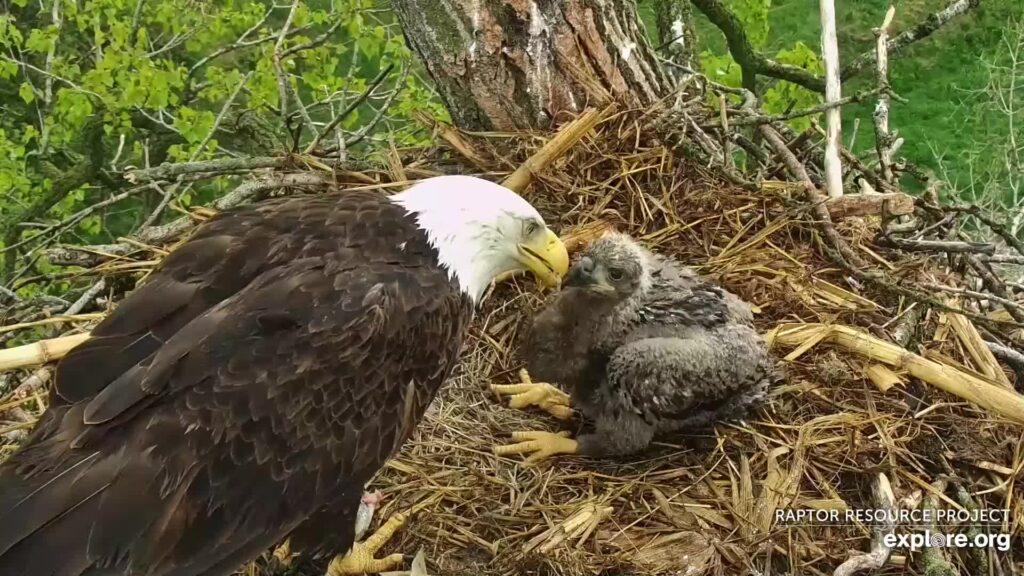

Decorah Eagles – Decorah, Iowa, U.S.A.
Nestflix and chill? This live stream puts you nose to beak with bald eagles in Decorah, Iowa. After the original nest was destroyed by a storm, the Raptor Resource Project stepped in to help with a rebuild. Today the nest is occupied by a mated pair and their adorable chick. Bald eagles have made a triumphant comeback since the mid-1900’s, when habitat loss, hunting, and chemical contamination pushed them to the brink of extinction. Thanks to rigorous conservation efforts, these raptors have rebounded with healthy numbers. Bald eagles are opportunistic foragers who perform an important cleanup service by feeding on carrion (dead animals). Like other predatory birds, they also keep populations of prey animals in check. They often mate for life, and when it’s time to raise young the parental duties are shared between both mom and dad. The nest is a flurry of activity as the chick grows rapidly into adulthood, and there’s no better time to tune into this live stream.
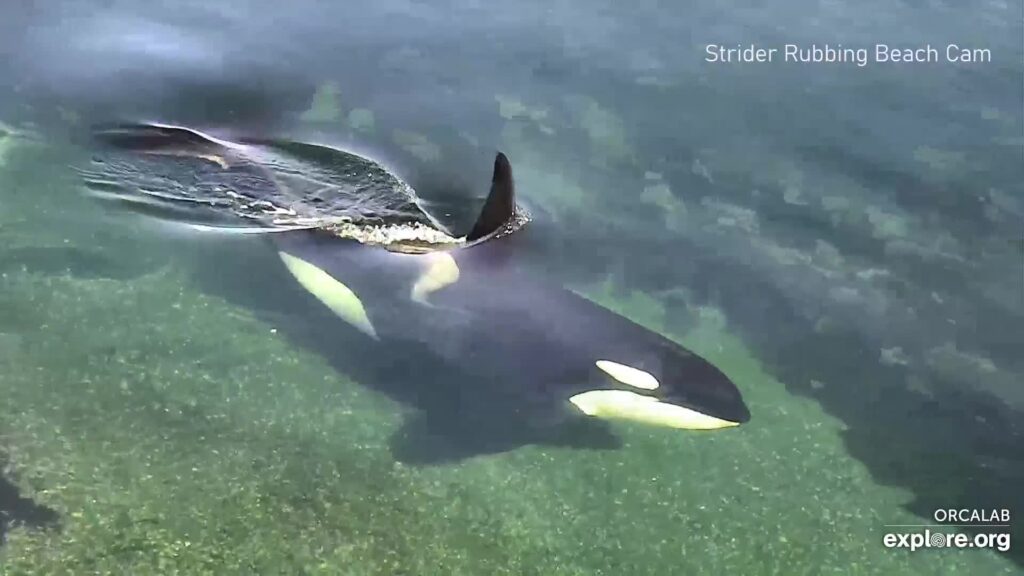

OrcaLab Main Cams – Hanson Island, B.C., Canada
Jump in and join the pod! OrcaLab is a small whale research station tucked in the coastal forest of Hanson Island. The surrounding waters serve as passageways for a variety of marine life, including dolphins, humpbacks, sea lions, and of course, orcas! Orcas are highly intelligent and social animals, and as top predators they keep delicate marine food webs in balance. Since 1970, OrcaLab has done important work in the world of marine conservation, including preserving orca habitat and fighting against commercial whaling. These livestreams give viewers a chance to appreciate the very animals OrcaLab has worked so hard to protect. As orca activity ramps up in the coming months, tune in to see these majestic animals breaching the surface and traveling along the rugged coast. Also be sure to check out the lab’s recently installed sea lion cam!
Stay in touch and get the latest WildAid updates.
SIGN UPAbout WildAid
WildAid is a non-profit organization with a mission to protect wildlife from illegal trade and other imminent threats. While most wildlife conservation groups focus on protecting animals from poaching, WildAid primarily works to reduce global consumption of wildlife products such as elephant ivory, rhino horn and shark fin soup. With an unrivaled portfolio of celebrity ambassadors and a global network of media partners, WildAid leverages more than $308 million in annual pro-bono media support with a simple message: When the Buying Stops, the Killing Can Too.
Journalists on deadline may email communications@wildaid.org